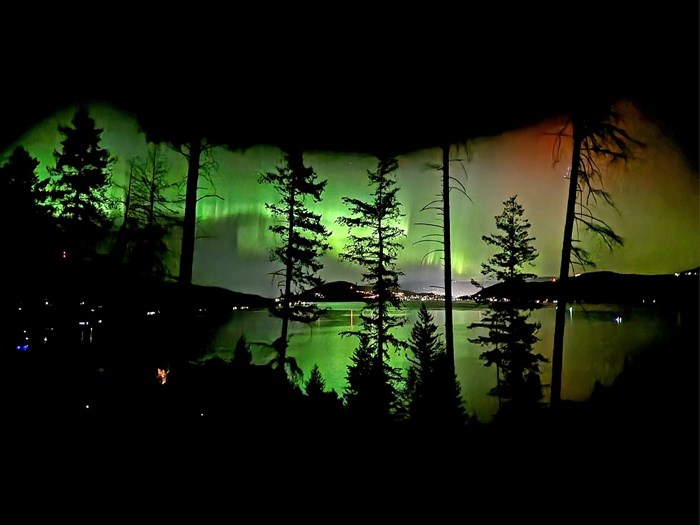
The aurora borealis is seen from Lake Country end of August.
Image Credit: SUBMITTED/ Gloria Sazbo
September 17, 2024 - 2:00 PM
The aurora borealis has been shimmering in the Thompson-Okanagan region this spring and summer, and more light shows are on the way.
The southern part of the province doesn’t typically get as much aurora activity, however, this year is a notable one as the sun is nearing its maximum solar flare activity, it is an occurrence that happens roughly every 11 years.
“The sun operates on an 11-year cycle and during that cycle there are times when aurora is active. We’re in the active phase right now so we should expect to see more light shows coming,” Chris Gainor with the Royal Canadian Astronomical Society in Victoria said.
The northern lights were visible in May this spring when the Space Weather Prediction Centre issued a severe geomagnetic storm watch for the first time since January 2005, and have continued appearing throughout the summer with the last big shows occurring on Aug. 31 and Sept. 13.
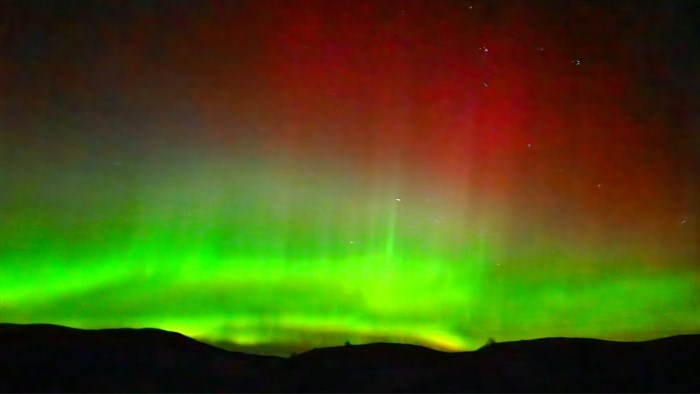
The northern lights shimmered over Kamloops end of August.
Image Credit: SUBMITTED/ Kimberly Jonsson
The aurora borealis occurs when energized particles from the sun hit the Earth’s atmosphere and are deflected to the magnetic poles by Earth’s magnetic field. The particles interact with the atmosphere creating colours.
“The particles can come in over the magnetic poles,” Gainor said. “The northern pole is over northern Canada and if the storm is big enough it’s effects can be seen as far south as the Okanagan or further.”
Gainor said cell phones often pick up colours that can’t be seen with the naked eye.
“Sometimes the eye in your phone camera is different than ours, it changes the look of aurora,” he said. “Looking through telescopes or taking photographs with different cameras can change the appearance.”
Colours of aurora vary depending on the altitude where the solar particles combine with oxygen and nitrogen in the atmosphere.
“Yellow and pink are rare and associated with high solar activity, blue and purple are little more common and green is most common,” he said.
READ MORE: iN PHOTOS: The artistry of an Okanagan glass blower
It's difficult to predict exactly when the aurora borealis will appear next.
“It’s hard to say how it’ll shake out because every solar cycle is different so we’ll just have to see, but I expect more activity now while we’re at the height of the cycle," Gainor said.
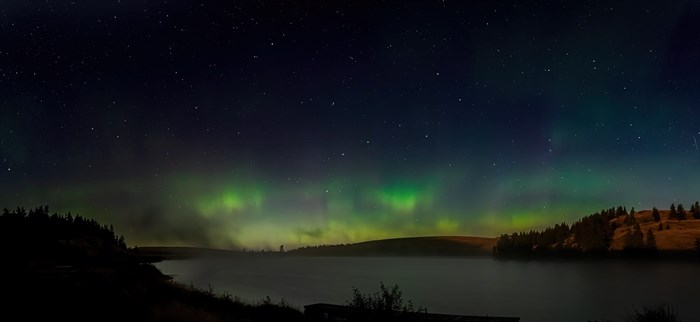
The sky was lit up with stars and Northern lights in Kamloops in September.
Image Credit: SUBMITTED/ Peter Olsen
Sky watchers can look for current activity levels through the American Space Weather Prediction Centre which is forecasting a likelihood of strong geomagnetic storms for Sept. 16.
“Often when there is a big geomagnetic storm coming, we’ll have a day or two warning and its possible to get aurora alerts from various agencies,” Gainor said.
Viewers will want to find a location away from city lights with a wide open view toward the north. A good camera helps, but most cell phone cameras can capture the northern lights well.
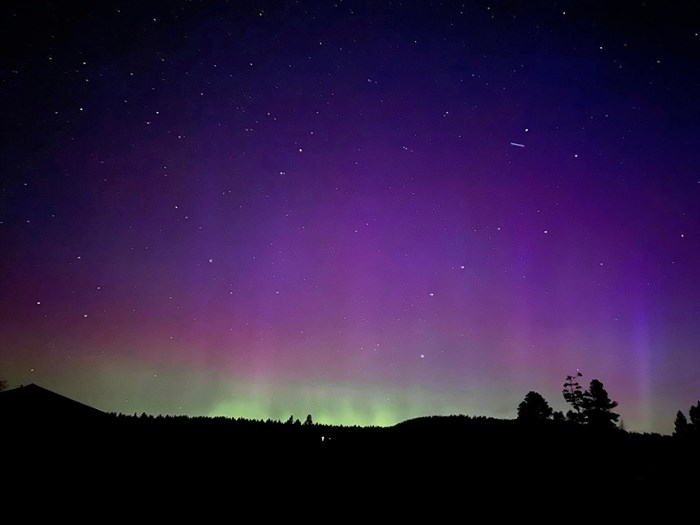
Purple and green aurora shines in skies over Princeton.
Image Credit: SUBMITTED/ Kathy Scott
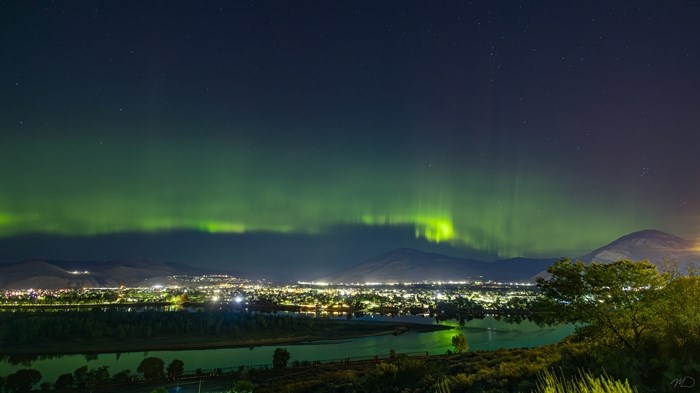
Northern lights shimmer over the hills in Kamloops.
Image Credit: SUBMITTED/ Mike Douthwright
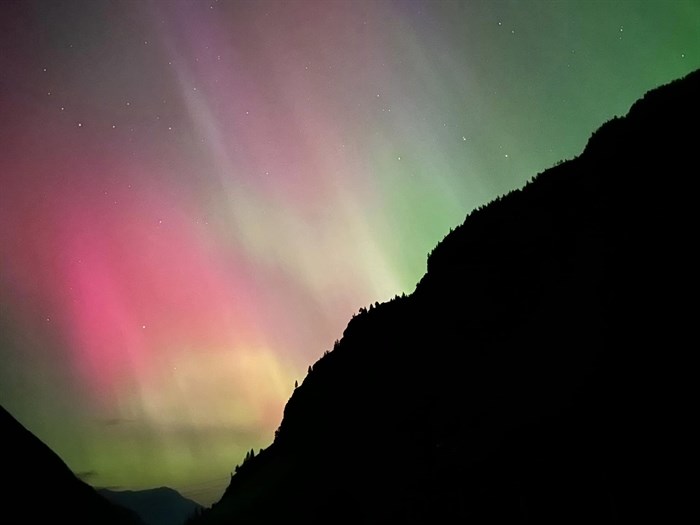
A silhouette of a mountain and colourful aurora borealis is seen in Lillooet.
Image Credit: SUBMITTED/ Michelle Obre
To contact a reporter for this story, email Shannon Ainslie or call 250-819-6089 or email the editor. You can also submit photos, videos or news tips to the newsroom and be entered to win a monthly prize draw.
We welcome your comments and opinions on our stories but play nice. We won't censor or delete comments unless they contain off-topic statements or links, unnecessary vulgarity, false facts, spam or obviously fake profiles. If you have any concerns about what you see in comments, email the editor in the link above. SUBSCRIBE to our awesome newsletter here.
News from © iNFOnews, 2024